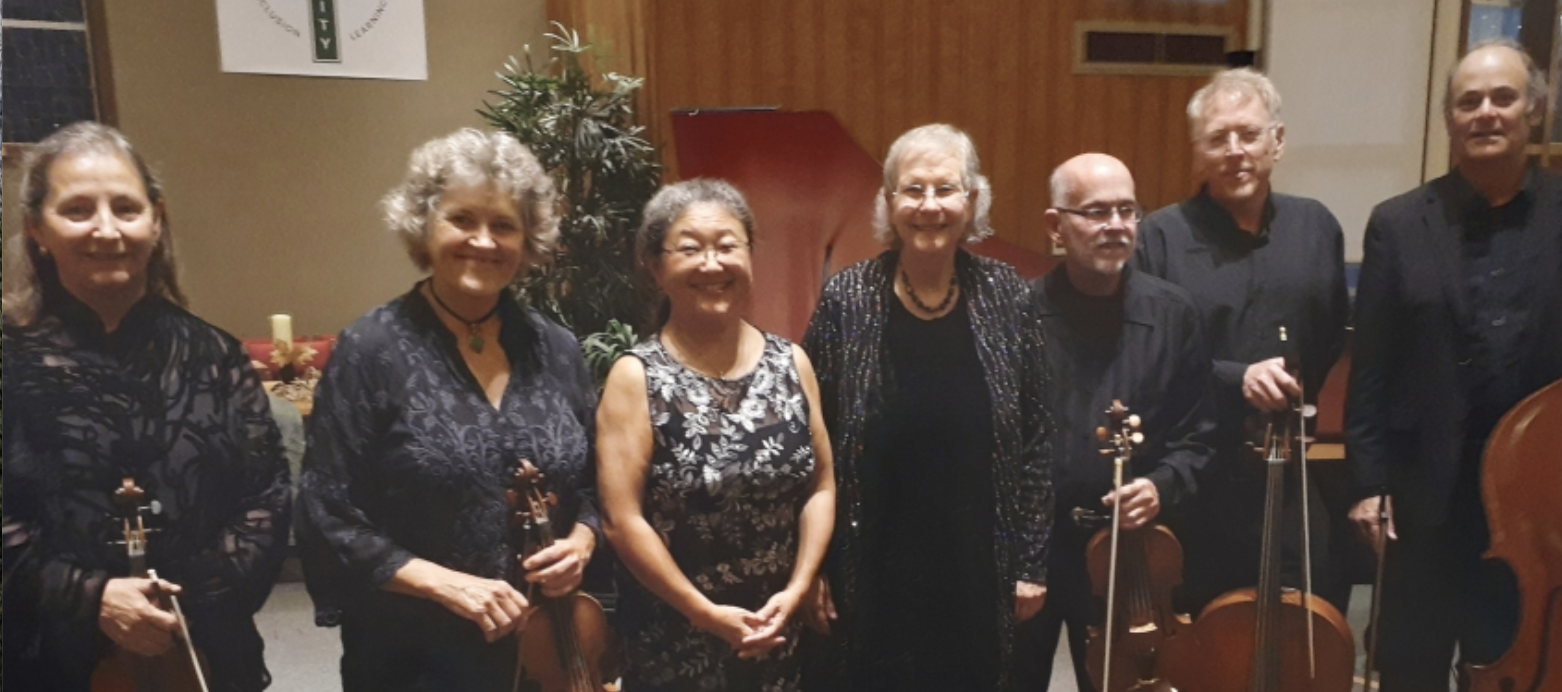|
Symphony
FROM THE NEW WORLD TO THE OLD WORLD
by Peter Lert
Saturday, June 14, 2025
Chamber
MC2 DUO RECITAL CLOSES 222'S SEASON
by Terry McNeill
Saturday, June 14, 2025
Choral and Vocal
CANTIAMO SONOMA'S LUSCIOUS A CAPELLA SINGING IN SEASON ENDING CONCERT
by Pamela Hicks Gailey
Sunday, June 8, 2025
Symphony
SRS SEASON ENDS WITH RESOUNDING TA-TA-TA-BANG
by Terry McNeill
Sunday, June 1, 2025
Symphony
YOUTHFUL VIRTUOSITY ON DISPLAY AT USO'S MAY CONCERTS
by Peter Lert
Saturday, May 17, 2025
Symphony
MYSTICAL PLANETS AND LIVELY GERSHWIN ORTIZ AT FINAL SRS CONCERT
by Peter Lert
Sunday, May 4, 2025
Symphony
VSO'S CONCERT MUSIC OF TIME, MUSIC OF PLACE
by Peter Lert
Sunday, April 27, 2025
VOCAL ELEGANCE AND FIRE AT THE 222'S RECITAL APRIL 26
by Pamela Hicks Gailey
Saturday, April 26, 2025
CANTIAMO SONOMA SINGS AN INSPIRED GOOD FRIDAY MOZART REQUIEM CONCERT
by Pamela Hicks Gailey
Friday, April 18, 2025
DRAMATIC SHOSTAKOVICH SYMPHONY CLOSES PHILHARMONIC'S 25TH SEASON
by Terry McNeill
Sunday, April 13, 2025
|
 |
 Mill Valley Chamber Music Players Oct. 2 |
STUNNING ALL-BACH CONCERT AT MILL VALLEY CHAMBER MUSIC SOCIETY
by Abby Wasserman
Sunday, October 2, 2022
Chamber Music Marin, formerly Mill Valley Chamber Music Society, inaugurated their 50th season October 2 with a stunning concert of Bach harpsichord concertos.
A stellar ensemble of musicians including Janine Johnson and Yuko Tanaka, harpsichords; Kati Kyme and Elizabeth Blumenstock, violins; violist David Bowes; cellist David Morse and Farley Pearce, contrabass, performed five of Bach’s keyboard concertos. This was a reprise of a 2017 program at the Berkeley Early Music Festival with all but one (Mr. Bowes) of the original seven players.
Bach was a great recycler of his music, and each concerto on the program was reimagined or reconstructed from an earlier work. The Concerto for Two Harpsichords in C minor, BWV 1060, for instance, has its source in an earlier concerto possibly for two violins or oboe and violin. It was a finely textured performance. From the first Allegro movement the violins, viola, cello and bass matched never swamped the softer voices of the harpsichords. In the slow movement (Adagio), the strings’ long pizzicato passages and the plucking action of the harpsichord strings created a lulling sound, like colored raindrops. The strings gained assertiveness in the third movement (Allegro) but never overwhelmed the keyboards. Throughout the tempo was well-paced, brisk, steady with compelling pulse.
Near the end a viola string broke, causing a pause that Ms. Blumenstock gracefully filled by rising to tell two funny music-themed limericks. When Mr. Bowes returned with a new tuned string, the concert continued.
The musical coordination of the harpsichordists during dense passages between was impressive. Here the string players were seated facing the audience, their backs to the soloists, and as though clairvoyant, the musicians played in sync with one another.
Ms. Tanaka was the performer for Bach’s D Major Concerto for Solo Harpsichord, BWV 1054. The Allegro’s dominant opening voices were charming hide-and-seek phrases, showcasing the registrations of the single-manual instruments. The Adagio summoned poignant images of personal loss, and the cello and bass lines lent dark texture to the finale where Ms. Tanaka surrounded the theme with filigree and flourishes.
The harpsichordists reunited for another C minor Bach concerto, this one BWV 1062. Although the music seemed to demand restrained string volume, there were times when they could sing out, and Ms. Kyme unbraided a sweet melodic line in the brisk tempo first movement. In the Andante the harpsichordists' phrasing echoed one another and often engaged in whispering musical dialogue. The exhilarating third movement featured full and rich string playing, the musician’s bows dancing across the strings.
Following intermission Ms. Johnson joined Ms. Blumenstock for the BWV 1052 Concerto in D minor, Bach’s first keyboard concerto and one that seems the most modern of the lot. There was equality and fine balance among soloist and strings, and each complemented the other. Ms. Johnson’s playing showcased piquant dissonances in the chromatic solo passages, and the subsequent Adagio featured somber repeating bass notes and harmonies that had a yearning character.
The finale had compelling momentum and built to a triumphant conclusion.
Bach’s Double Harpsichord Concerto in C Major, BWV 1061, closed the program, and may have had its origin as a solo keyboard concerto, similar to the Italian Concerto. In any event the strings had very little here to do but provide shadings and emphases, and they were entirely silent during the Adagio ovvero Largo, a sublime harpsichord duet that the soloists performed brilliantly. There were lovely antiphonies and intricate musical ornamentations that were enchanting.
In the third Fuga movement, Ms. Tanaka played the theme, then Ms. Johnson joined as its second voice, and one by one each member of the ensemble entered until the sound was intricately blended in fugal harmony and moved towards a riveting conclusion. The audience rose for an ovation.
The harpsichords, loaned by their owners, were made by Berkeley craftsman John Phillips, patterned after antique instruments.
|

